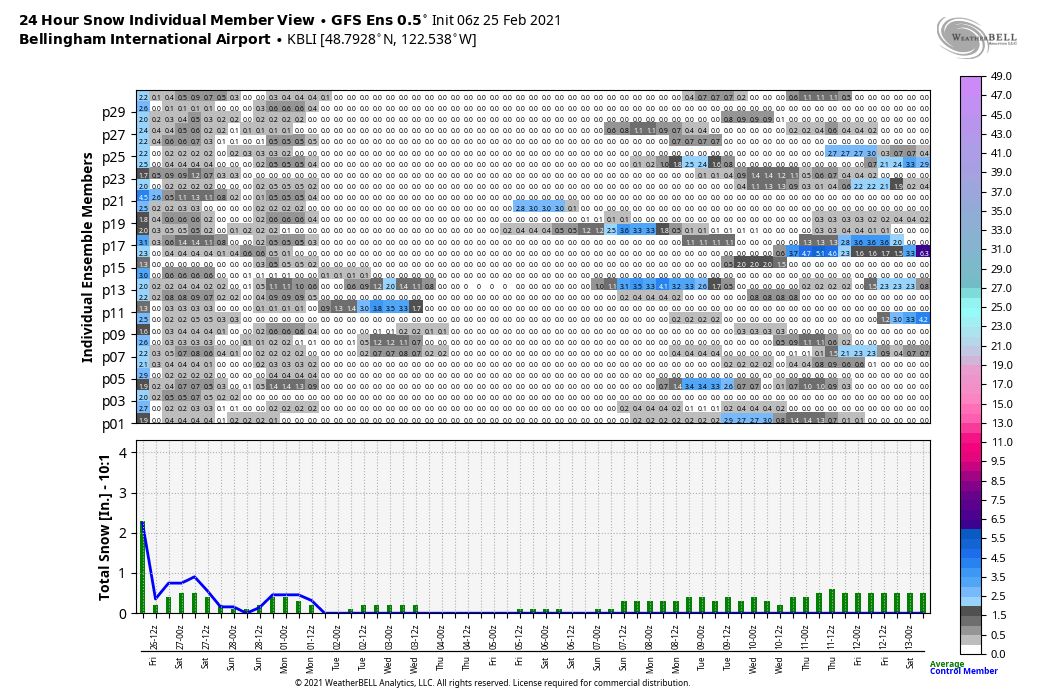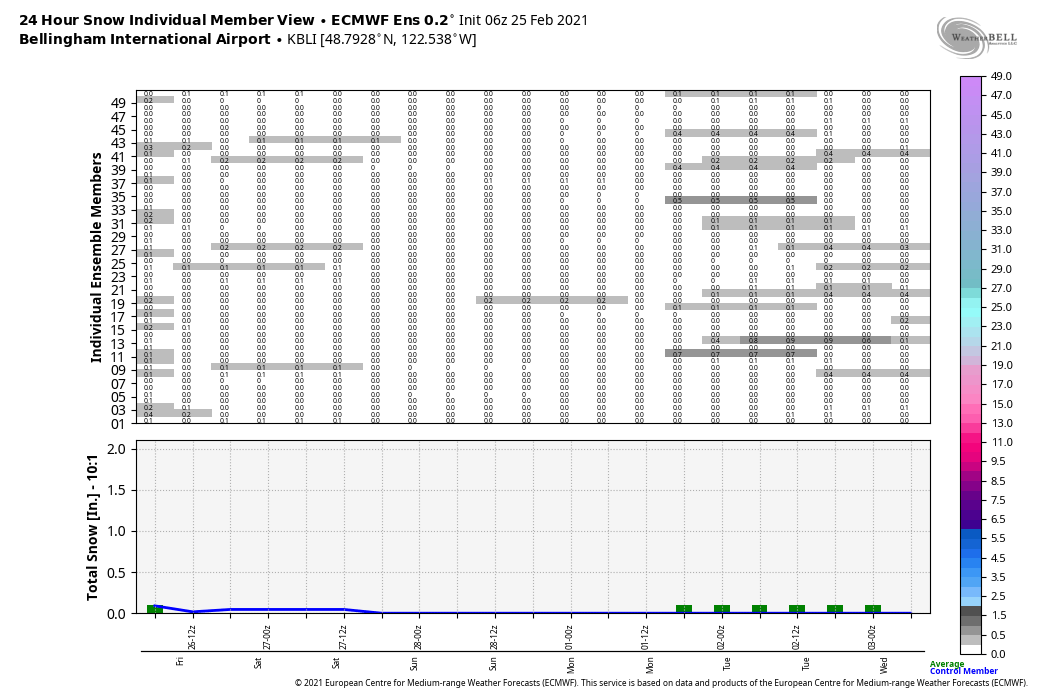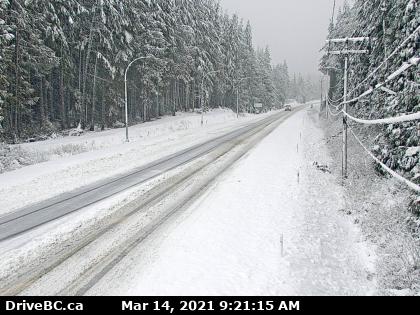Published at 08:54 on 25 February 2021
This is called a meteogram:
 It is a graphical representation of a model run for a single point on the Earth’s surface, in this case the weather station at Bellingham airport. Note that I should have said “suite of model runs” instead of “model run:” each so-called forecasting model is in fact multiple runs, each initialized with a slightly different set of parameters, all based on current observations. This is done to provide a measure of how reliable the model is: if each run in the suite is all over the map (like they are for the weekend after next), it means the model’s predictions cannot be trusted very much.
It is a graphical representation of a model run for a single point on the Earth’s surface, in this case the weather station at Bellingham airport. Note that I should have said “suite of model runs” instead of “model run:” each so-called forecasting model is in fact multiple runs, each initialized with a slightly different set of parameters, all based on current observations. This is done to provide a measure of how reliable the model is: if each run in the suite is all over the map (like they are for the weekend after next), it means the model’s predictions cannot be trusted very much.
By contrast, every run in the suite above is in agreement that we are about to have a lowland snow event, totaling an inch or two. Very high confidence, but wait. This is for the GFS model, the one developed by the National Oceanic and Atmospheric Administration. This model has a tendency in our climate to underestimate the moderating effects of the Pacific Ocean and the Cascade Mountains, plus it is generally not as reliable as the ECMWF model developed by the EU nations. What does that model have to say?

Both significantly less snowy and significantly less confident in any sort of snow outcome. Let me let you in on another secret: any time those models forecast a snowfall range in the lighter gray colors, one almost never sees any accumulation unless the temperature is solidly below freezing at the onset of the event. The temperature is not forecast to be solidly below freezing. In other words, this model is saying there is an off chance of seeing some wet flakes in the air tonight, with no accumulation.
Now, if the ECMWF model had shown basically the same story as the GFS one, we would be in a situation much like we were going into the solstice, and I would be making a confident snow prediction regardless of what the official forecasts said. If both models consistently tell the same story, they are almost always correct.
But both models are not consistently telling the same story, so what to do about it? First, what we can do is limited: it’s going to be a lower-confidence forecast, no matter what. The signs are mixed as to what is going to happen. However, the more accurate of the two models is saying little if any snow tonight. Moreover, the less accurate model is known to have defects which can explain precisely this discrepancy.
Therefore, it is wise to go with the ECMWF guidance: an off chance of some wet flakes in the air.
But note what would have happened if a) I liked snow, b) I didn’t know about the defects in the GFS model, and c) I let my emotions cloud my judgement. I would have helped start a false rumor about there being a viable chance for an inch or two of snow overnight.
This is why the models are often called model guidance: they are not there to forecast the weather, they are merely there to help people forecast the weather.



